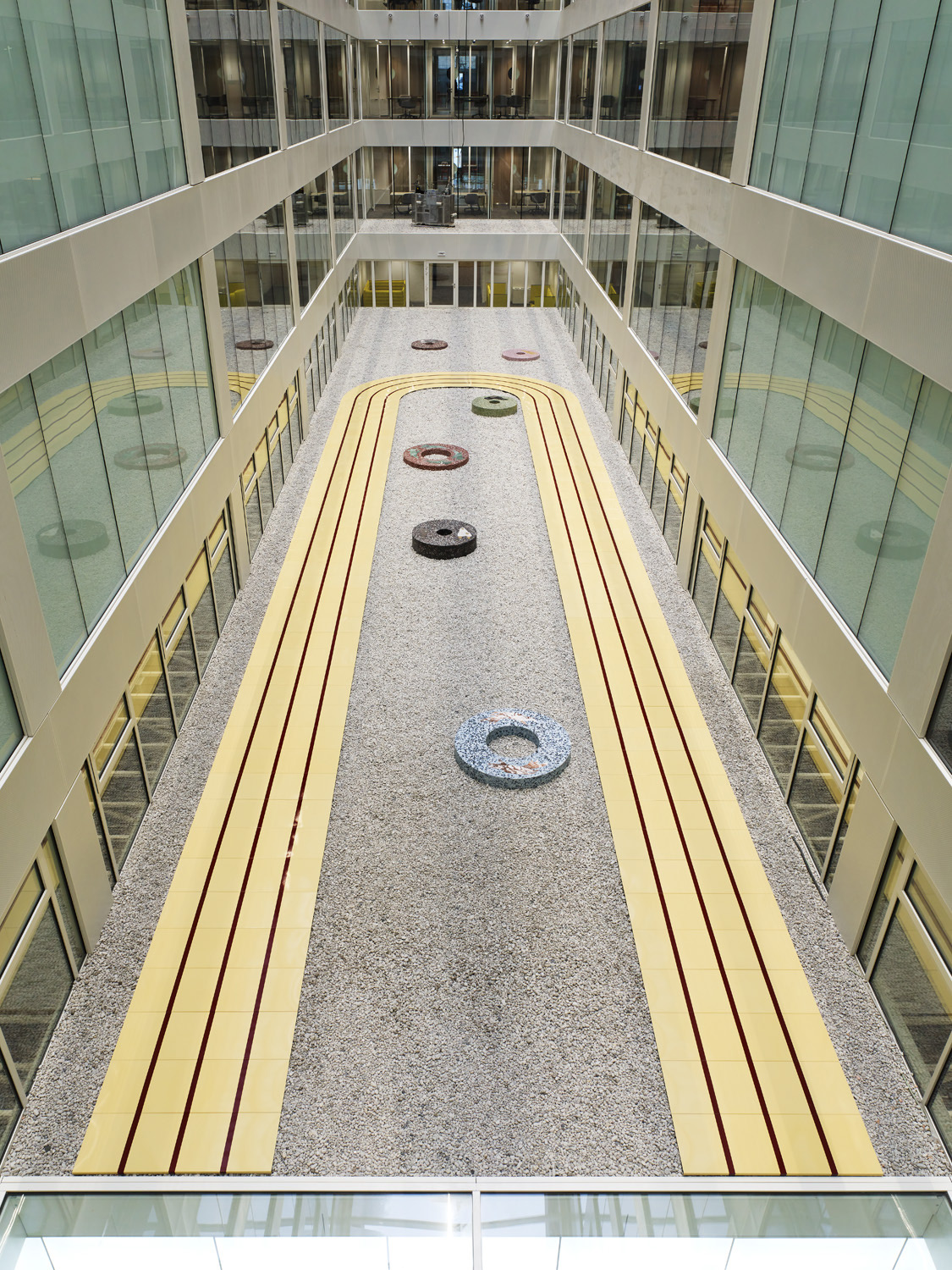
Zinneke, 2022, installation view at Brucity.

Zinneke, 2022, installation view at Brucity.
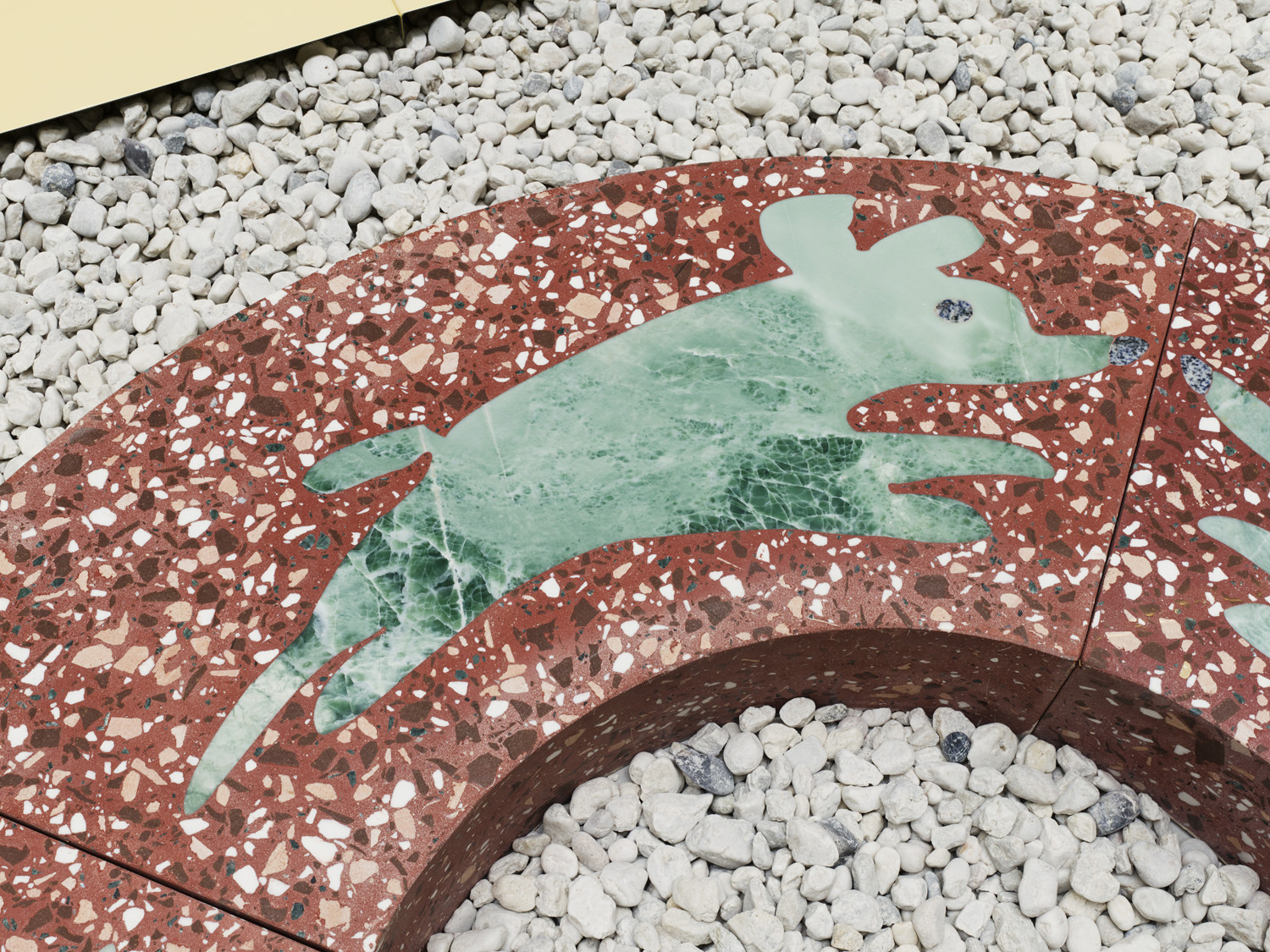
Zinneke, 2022, installation view at Brucity.
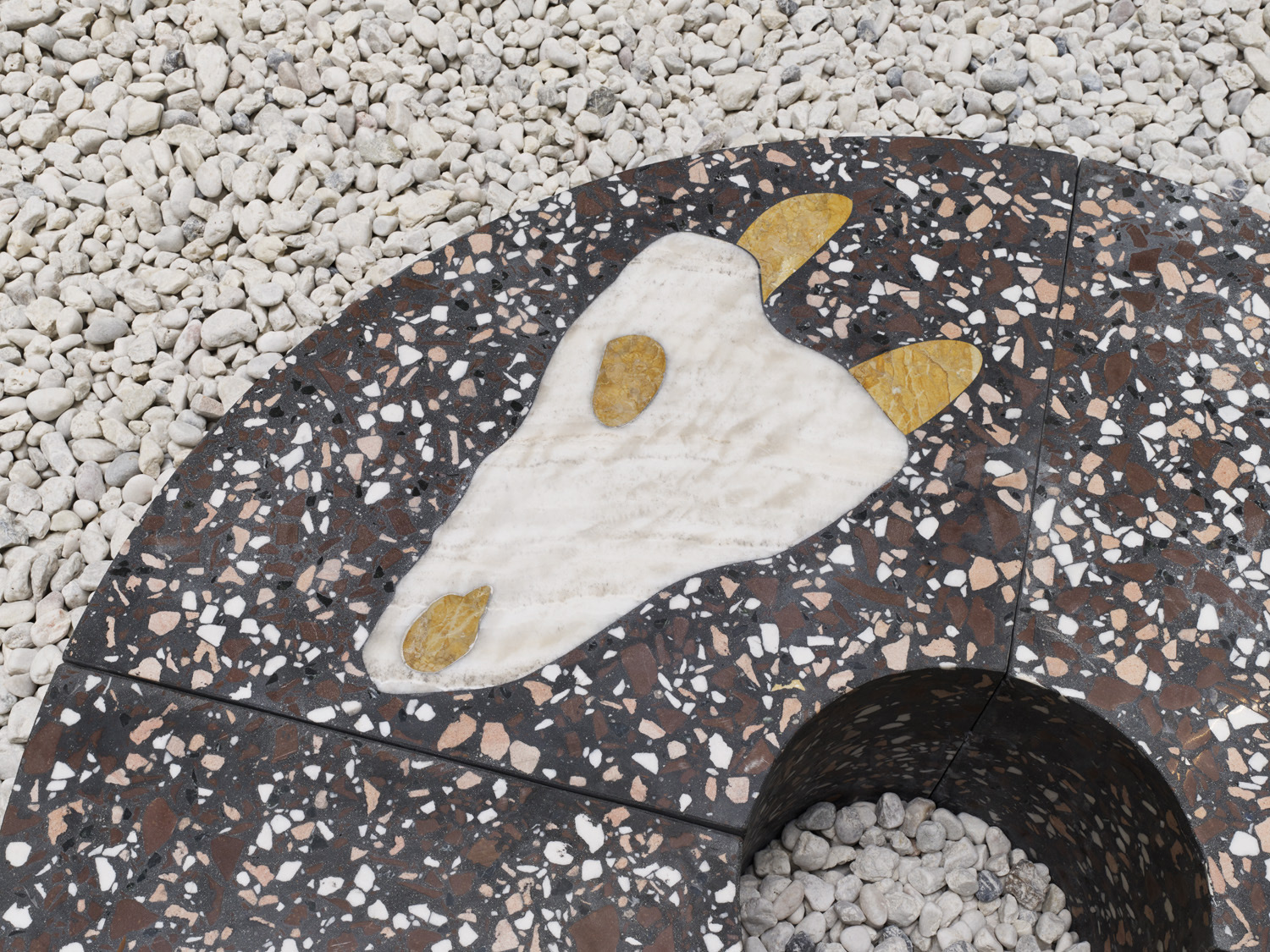
Zinneke, 2022, installation view at Brucity.
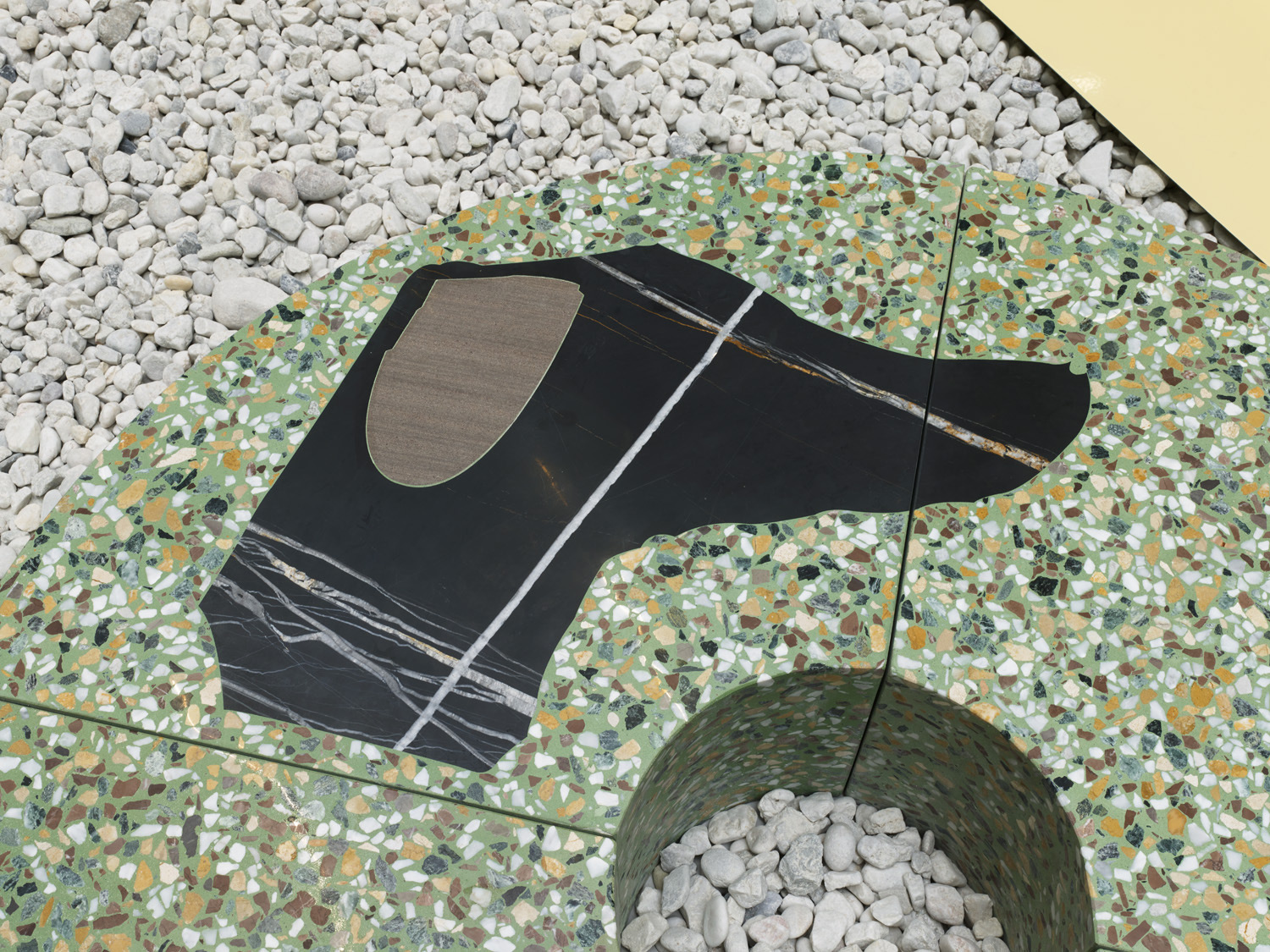
Zinneke, 2022, installation view at Brucity.
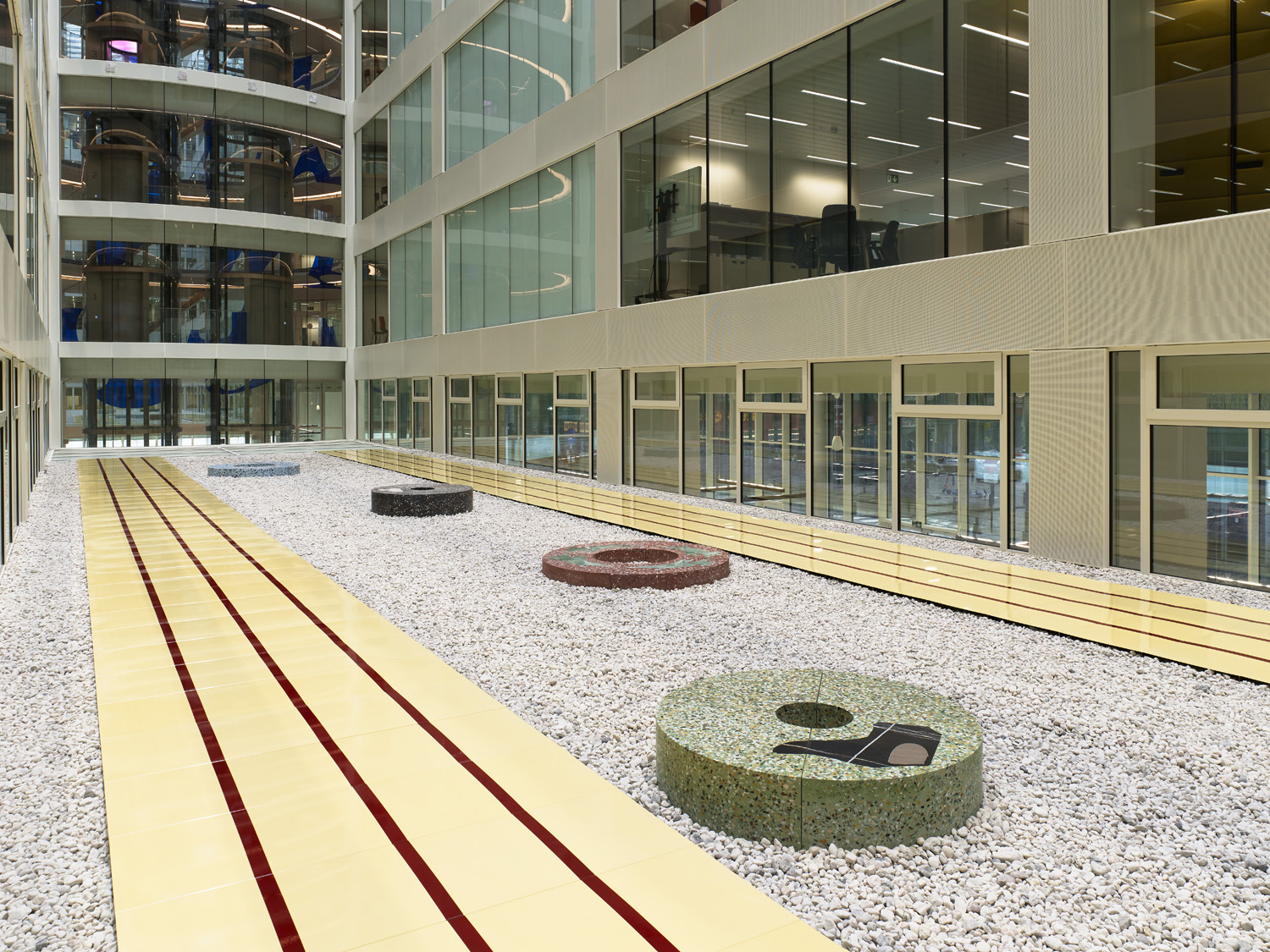
Zinneke, 2022, installation view at Brucity.

Zinneke, 2022, installation view at Brucity.
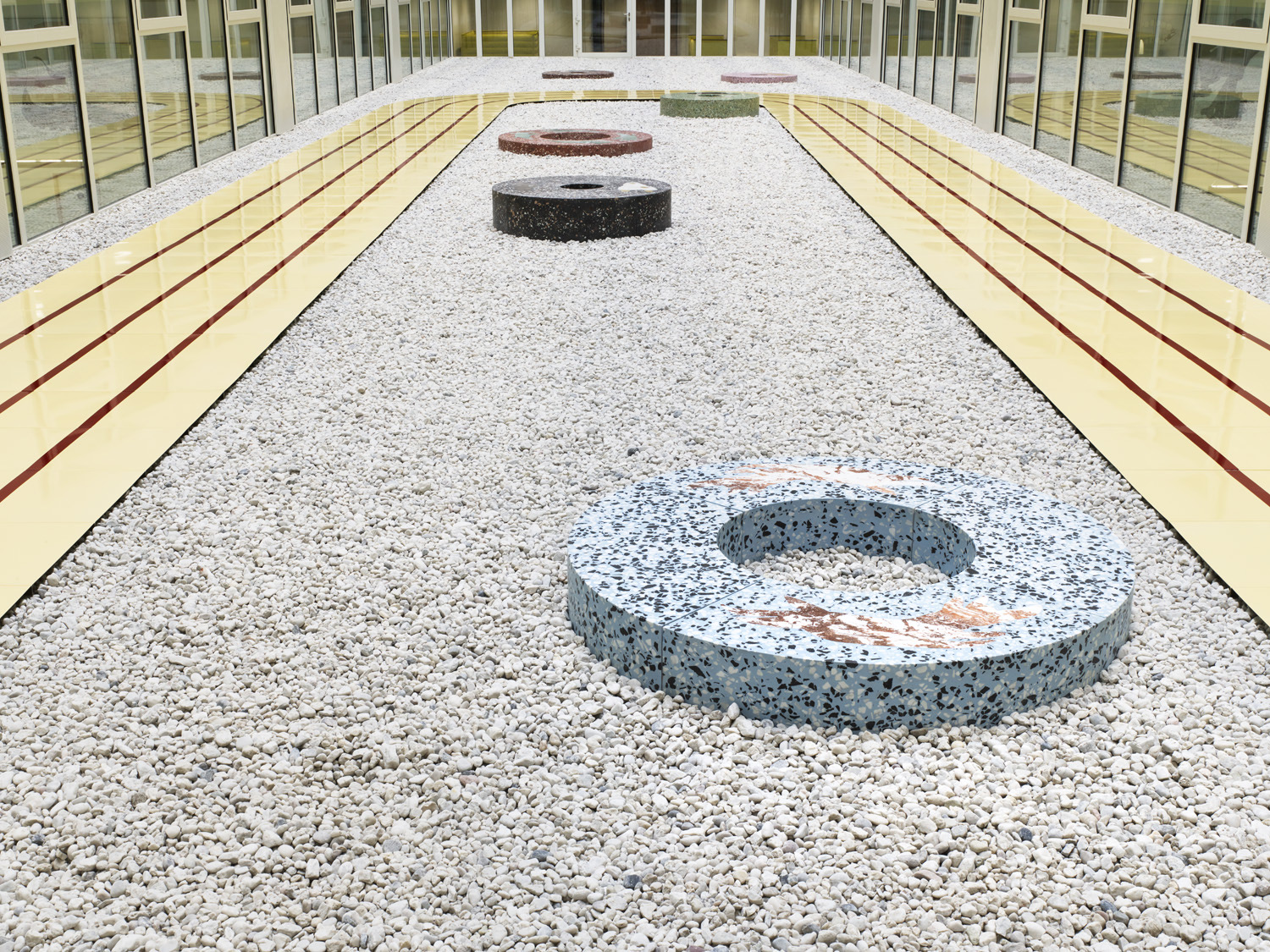
Zinneke, 2022, installation view at Brucity.
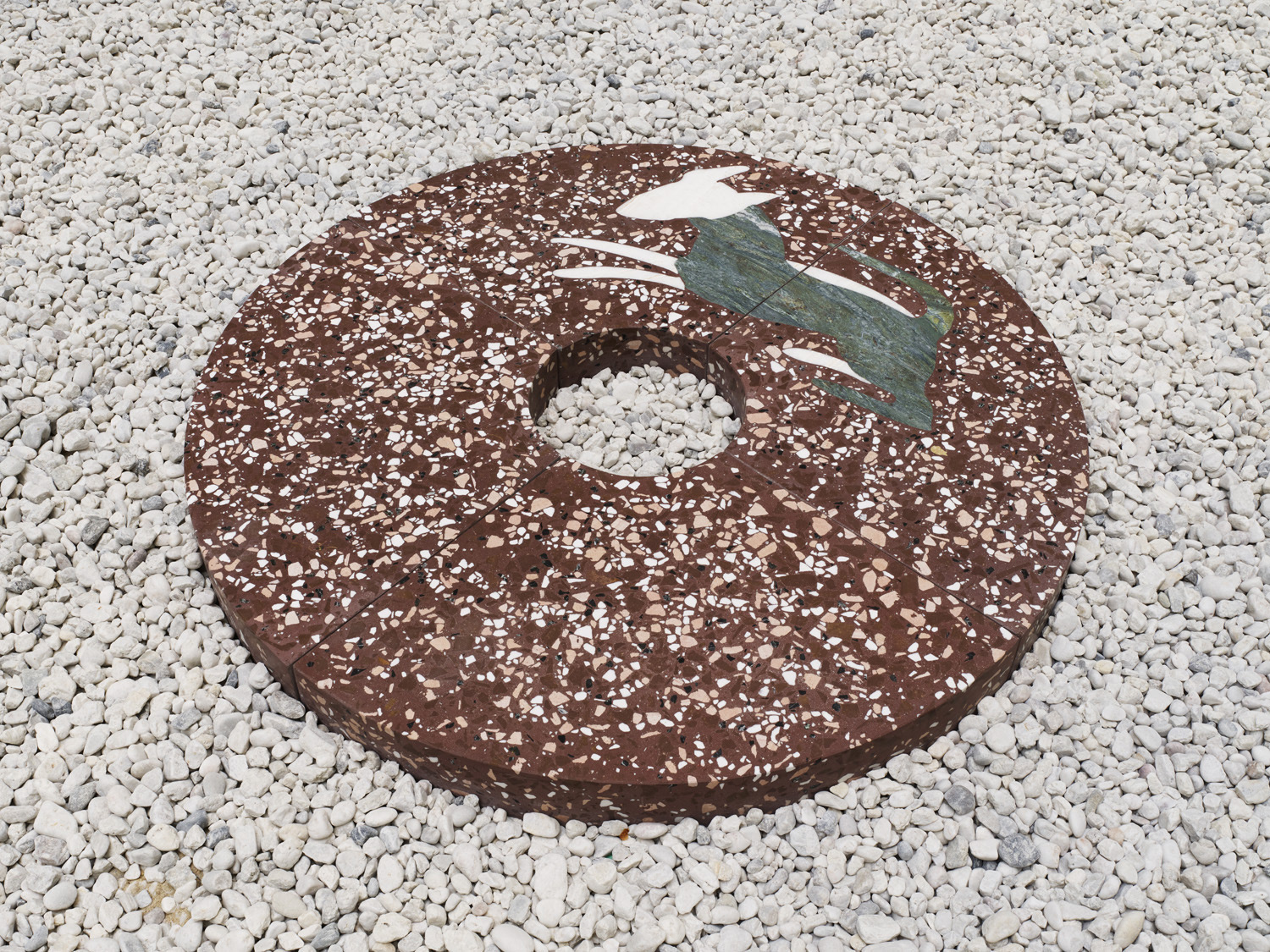
Zinneke, 2022, installation view at Brucity.
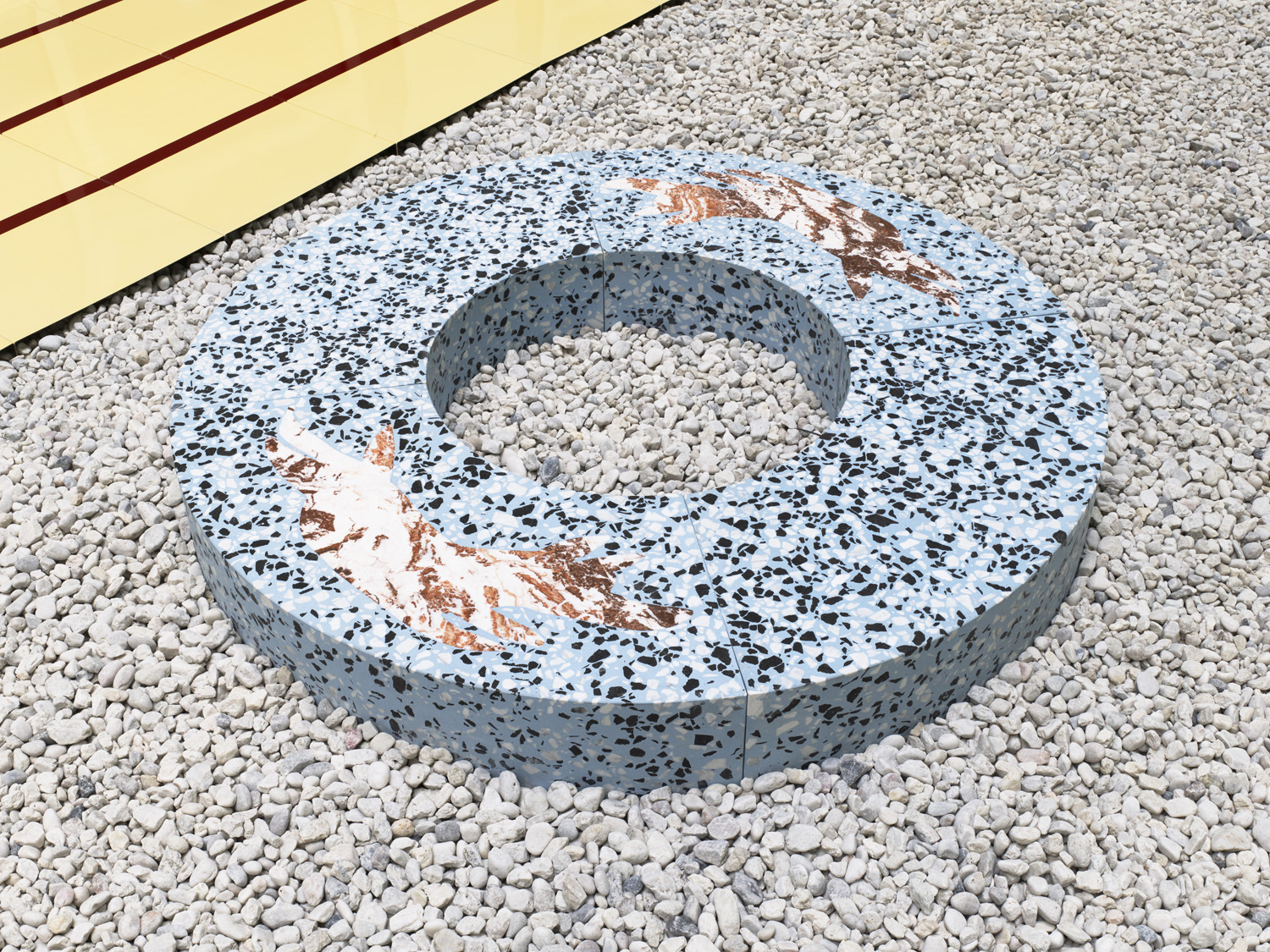
Zinneke, 2022, installation view at Brucity.
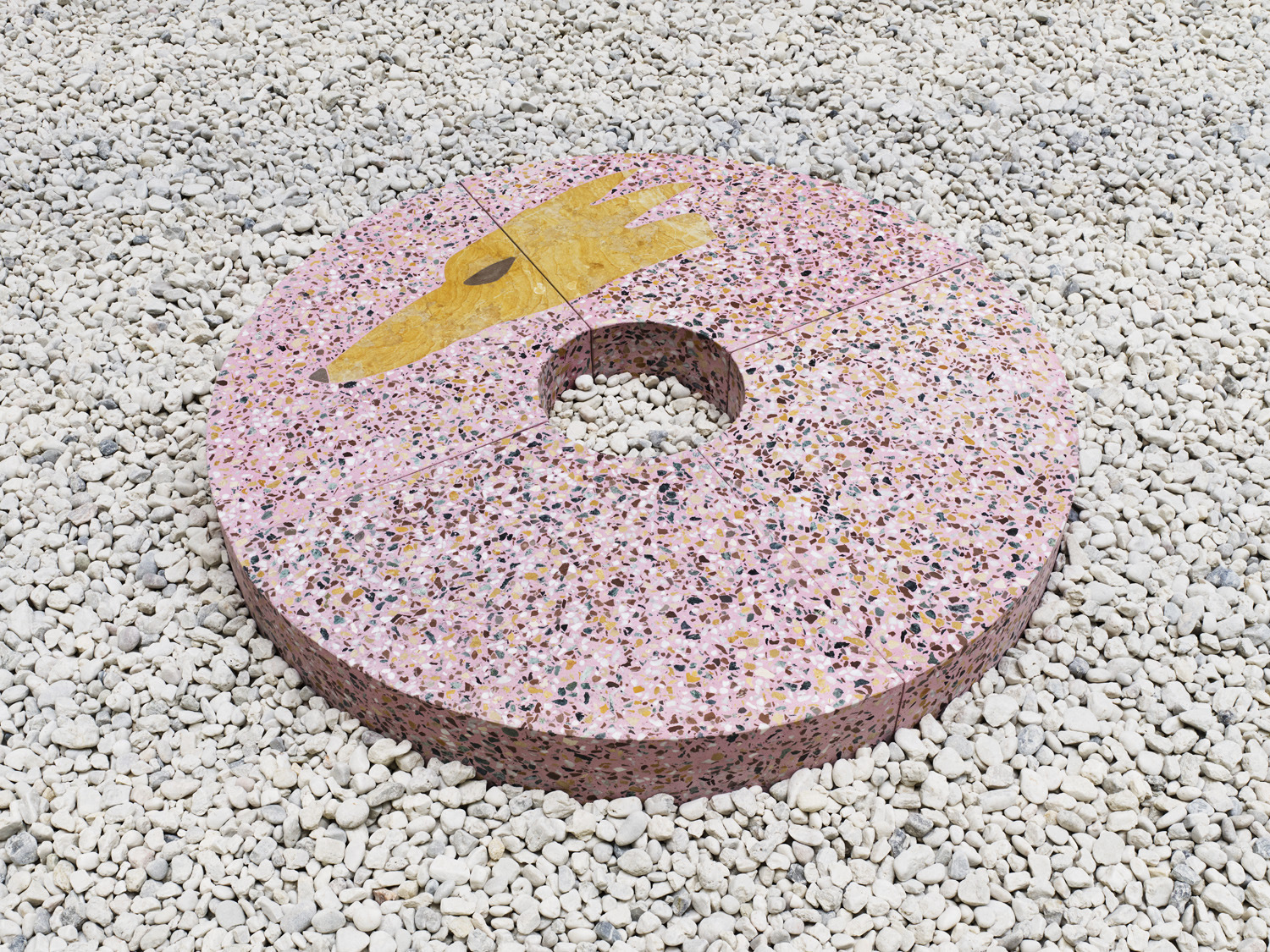
Zinneke, 2022, installation view at Brucity.
The history of the river Senne, which once flowed through the site of the Brucity Administrative Centre, is the starting point for the work Zinneke by artist Kasper Bosmans. Two discoveries particularly caught the artist's attention: a 10th century millstone unearthed during archaeological excavations prior to the building's construction, and the presence on the site of an old dog-racing track that hosted races until the early 1950s.
Bosmans has thus designed an abstract enamel dog track for Brucity's two atriums. The installation is rounded off by circular elements calling to mind the shape of the 10th century millstone. These elements, made of terrazzo - a building material consisting of fragments of salvaged marble mixed with cement - feature carved representations of dogs.
In the 19th century, zinneke was the name given to stray dogs. The expression was later used to describe people living in Brussels who had not been born there. Nowadays, the word zinneke is used to describe the inhabitants of Brussels and thus celebrates the diversity of the city's population. The 'zinnekes' on the enamel racetrack are named after the dogs of local residents.